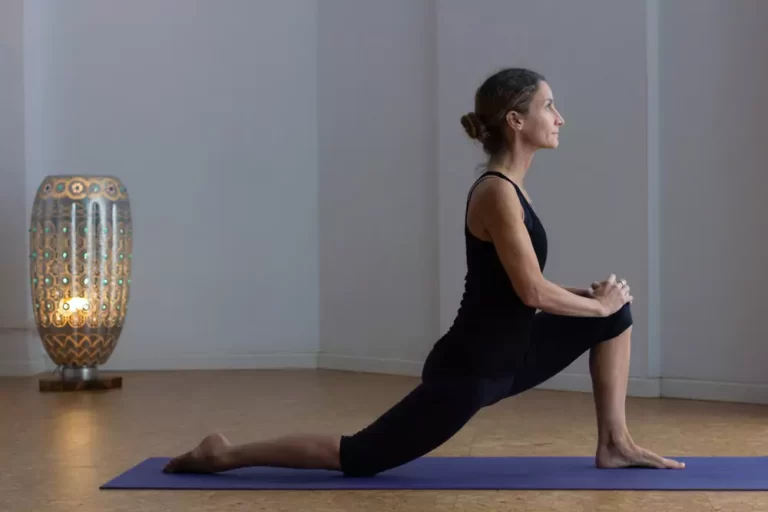Is Doing Yoga 3 Times A Week Enough? Exploring the Benefits of a Regular Practice

Yoga has become increasingly popular in recent years, with people of all ages and fitness levels taking up the practice. One question that often arises is whether doing yoga three times a week is enough to see results. While the answer may vary depending on individual goals and fitness levels, there are some general guidelines to consider.
According to a study published in the Journal of Alternative and Complementary Medicine, practicing yoga three times a week can lead to significant improvements in flexibility, strength, and balance. In addition, regular yoga practice has been shown to reduce stress, improve sleep quality, and enhance overall well-being. However, it is important to note that the benefits of yoga are cumulative, meaning that the more you practice, the greater the benefits.
While three times a week may be enough to see some benefits, it is important to mix up your routine and try different types of yoga and other exercises as well. This will help ensure that you are getting a well-rounded fitness program and prevent boredom. Additionally, it is important to listen to your body and adjust your practice as needed, whether that means taking a break when you feel fatigued or modifying poses to accommodate injuries or limitations.
Benefits Of Practicing Yoga
Believing that three times a week of yoga is enough might sound reasonable, but it’s actually far from the truth. In fact, regular practice of yoga has countless benefits for both physical and mental health, making it essential to our wellbeing.
On the physical side, it can help improve flexibility and strength in muscles and joints, as well as reduce stress levels. It can also help with posture alignment and joint lubrication, reducing the risk of possible injuries due to wrong postures or lack of mobility. Additionally, regular practice can boost the immune system and even aid in weight loss.
Beyond that, yoga comes with psychological benefits too. It helps promote relaxation while calming the mind, thus providing stress relief. Practicing regularly can also increase self-awareness and clarity of thoughts by improving focus and concentration. Moreover, studies have shown that doing yoga can improve moods and provide overall better mental wellbeing.
It is clear then that practicing yoga more than three times a week provides numerous advantages for our physical and mental health; something we should all strive to incorporate into our lives.
Types of Yoga
There are many different types of yoga, each with its own unique benefits and challenges. Here are a few of the most popular types of yoga:
- Hatha Yoga: This is the most basic form of yoga and is great for beginners. It focuses on basic postures and breathing exercises.
- Vinyasa Yoga: This is a more dynamic form of yoga that involves flowing from one posture to the next. It’s great for building strength and flexibility.
- Ashtanga Yoga: This is a more intense form of yoga that involves a set sequence of postures. It’s great for building stamina and focus.
- Bikram Yoga: Also known as hot yoga, Bikram yoga is performed in a room heated to 105 degrees Fahrenheit. It’s great for detoxifying the body and improving flexibility.
When deciding which type of yoga to practice, it’s important to consider your fitness level and goals. If you’re new to yoga, Hatha or Vinyasa yoga might be a good place to start. If you’re looking for a more intense workout, Ashtanga or Bikram yoga might be a better fit.
Regardless of which type of yoga you choose, it’s important to listen to your body and take things at your own pace. Remember, yoga is about more than just physical exercise. It’s also about finding inner peace and balance.
Also Read: Yoga Plank Pose: Does it Aid in Weight Loss?
Frequency of Yoga Practice
Yoga is a great way to improve flexibility, strength, and overall health. But how often should you practice to see results? According to various sources, practicing yoga at least three times a week is recommended for best results.
However, it’s important to note that practicing more than five times a week may not bring any additional benefits. It’s important to find a balance that works for you and your body.
The frequency of your yoga practice may also depend on your goals. For example, if your goal is to build muscle, you may need to practice more frequently than someone who is practicing for stress relief or flexibility.
Ultimately, the frequency of your yoga practice should be based on your individual needs and goals. It’s important to listen to your body and find a routine that works for you.
Is 3 Times a Week Enough?
Many yoga practitioners wonder if doing yoga 3 times a week is enough to see results. The answer is that it depends on your goals and what you consider “results.”
According to a large study of yoga practitioners, people who practiced yoga 3-5 times a week saw steady progress in strength and flexibility. However, if your goal is to build muscle, you may need to practice more frequently.
It’s important to remember that consistency is key in any fitness routine. Doing yoga 3 times a week consistently is better than doing it sporadically.
Additionally, the intensity and duration of your yoga sessions can also impact the results you see. If you’re doing gentle yoga for stress relief, 3 times a week may be sufficient. However, if you’re doing power yoga or hot yoga, you may need to practice more often to see significant results.
Ultimately, the best way to determine if 3 times a week is enough for you is to listen to your body and track your progress. If you’re seeing the results you want and feel good after your yoga sessions, then 3 times a week may be sufficient for you.
Factors to Consider
When considering whether doing yoga three times a week is enough, there are several factors to take into account:
- Starting Fitness Level: If you are new to yoga, three times a week may be sufficient to see progress. However, if you are already physically fit, you may need to practice more frequently to continue to challenge your body.
- Individual Goals: Your personal goals for practicing yoga will also affect how often you need to practice. If you are looking to improve your flexibility, for example, you may need to practice more frequently than someone who is simply using yoga as a way to relax and reduce stress.
- Type of Yoga: The type of yoga you practice can also impact how often you need to practice. More intense styles, like Ashtanga or Power Yoga, may require more frequent practice to see results, while more gentle styles, like Restorative Yoga, may be effective with less frequent practice.
- Overall Lifestyle Habits: Your overall lifestyle habits, including nutrition, sleep quality, and stress levels, can also impact how often you need to practice yoga. If you are leading a high-stress lifestyle, for example, you may need to practice more frequently to counteract the negative effects of stress on your body.
In general, practicing yoga three times a week can be an effective way to improve your physical and mental health. However, the specific frequency that is right for you will depend on your individual circumstances and goals.
Related Read: What is Ashtanga Yoga – A Way To Transform Your Life
Conclusion
Doing Yoga three times a week can be a great way to improve your physical and mental health. Regular practice can increase your strength and flexibility, reduce stress, and improve your overall outlook on life. However, whether three times a week is enough for you depends on your individual goals and needs.
If you are looking to improve your physical fitness, you may need to do Yoga more frequently or incorporate other forms of exercise into your routine. On the other hand, if you are primarily interested in the mental and emotional benefits of Yoga, three times a week may be sufficient.
Ultimately, the best way to determine whether three times a week is enough for you is to listen to your body. Pay attention to how you feel after each practice and adjust your routine as needed. Remember that Yoga is a journey, and there is no one-size-fits-all approach.
Regardless of how often you practice, it is important to approach Yoga with an open mind and a willingness to learn. With dedication and patience, you can experience the many benefits that Yoga has to offer.





